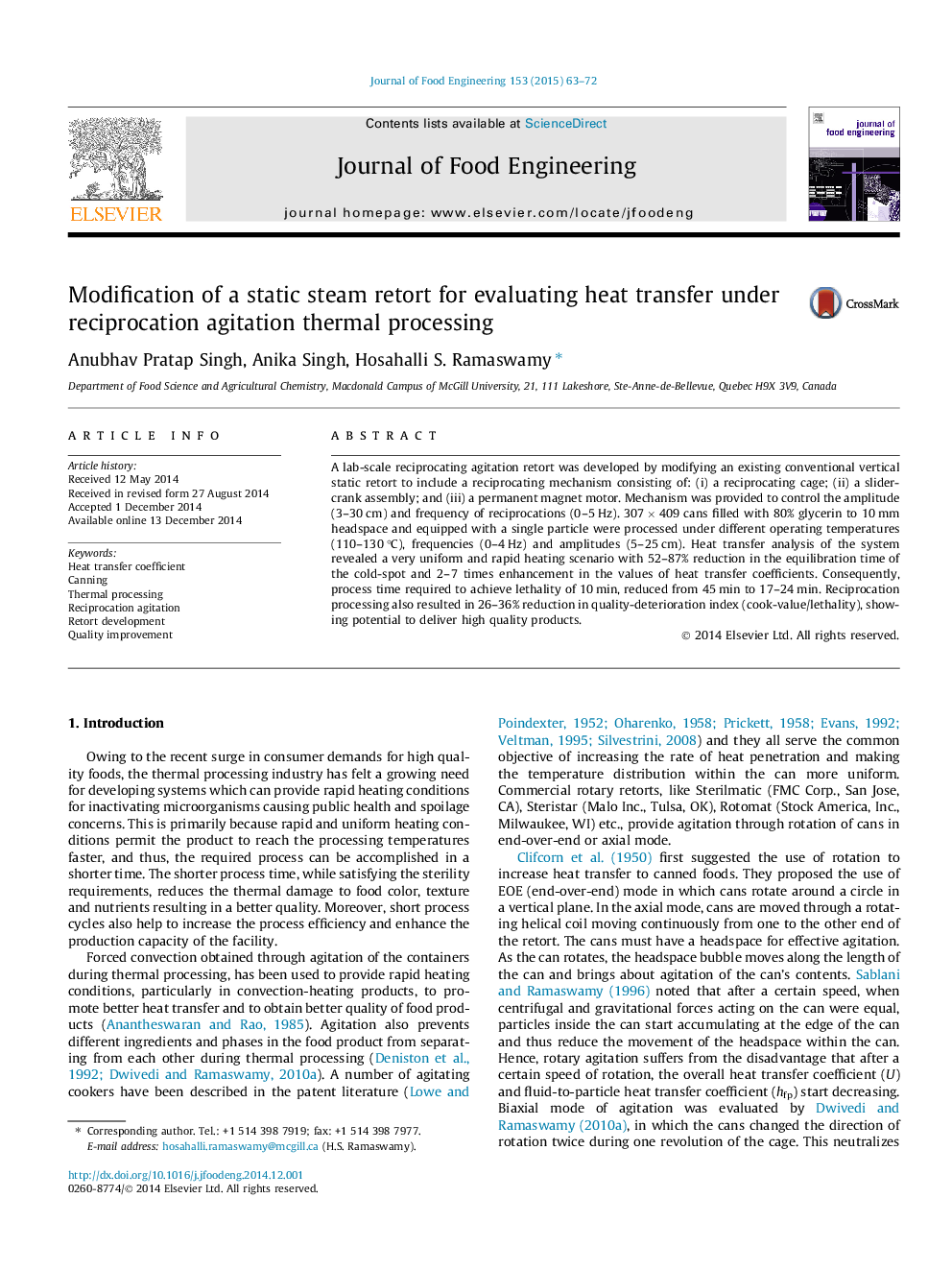| Article ID | Journal | Published Year | Pages | File Type |
|---|---|---|---|---|
| 222885 | Journal of Food Engineering | 2015 | 10 Pages |
•A lab-scale retort was equipped to study reciprocating agitation.•Reciprocating agitation resulted in more uniform and rapid heat penetration.•Reciprocation thermal processing led to short equilibration and process times.•Reciprocation frequency had more pronounced effect than amplitude.•Reciprocation thermal processing has potential for better quality retention.
A lab-scale reciprocating agitation retort was developed by modifying an existing conventional vertical static retort to include a reciprocating mechanism consisting of: (i) a reciprocating cage; (ii) a slider-crank assembly; and (iii) a permanent magnet motor. Mechanism was provided to control the amplitude (3–30 cm) and frequency of reciprocations (0–5 Hz). 307 × 409 cans filled with 80% glycerin to 10 mm headspace and equipped with a single particle were processed under different operating temperatures (110–130 °C), frequencies (0–4 Hz) and amplitudes (5–25 cm). Heat transfer analysis of the system revealed a very uniform and rapid heating scenario with 52–87% reduction in the equilibration time of the cold-spot and 2–7 times enhancement in the values of heat transfer coefficients. Consequently, process time required to achieve lethality of 10 min, reduced from 45 min to 17–24 min. Reciprocation processing also resulted in 26–36% reduction in quality-deterioration index (cook-value/lethality), showing potential to deliver high quality products.
